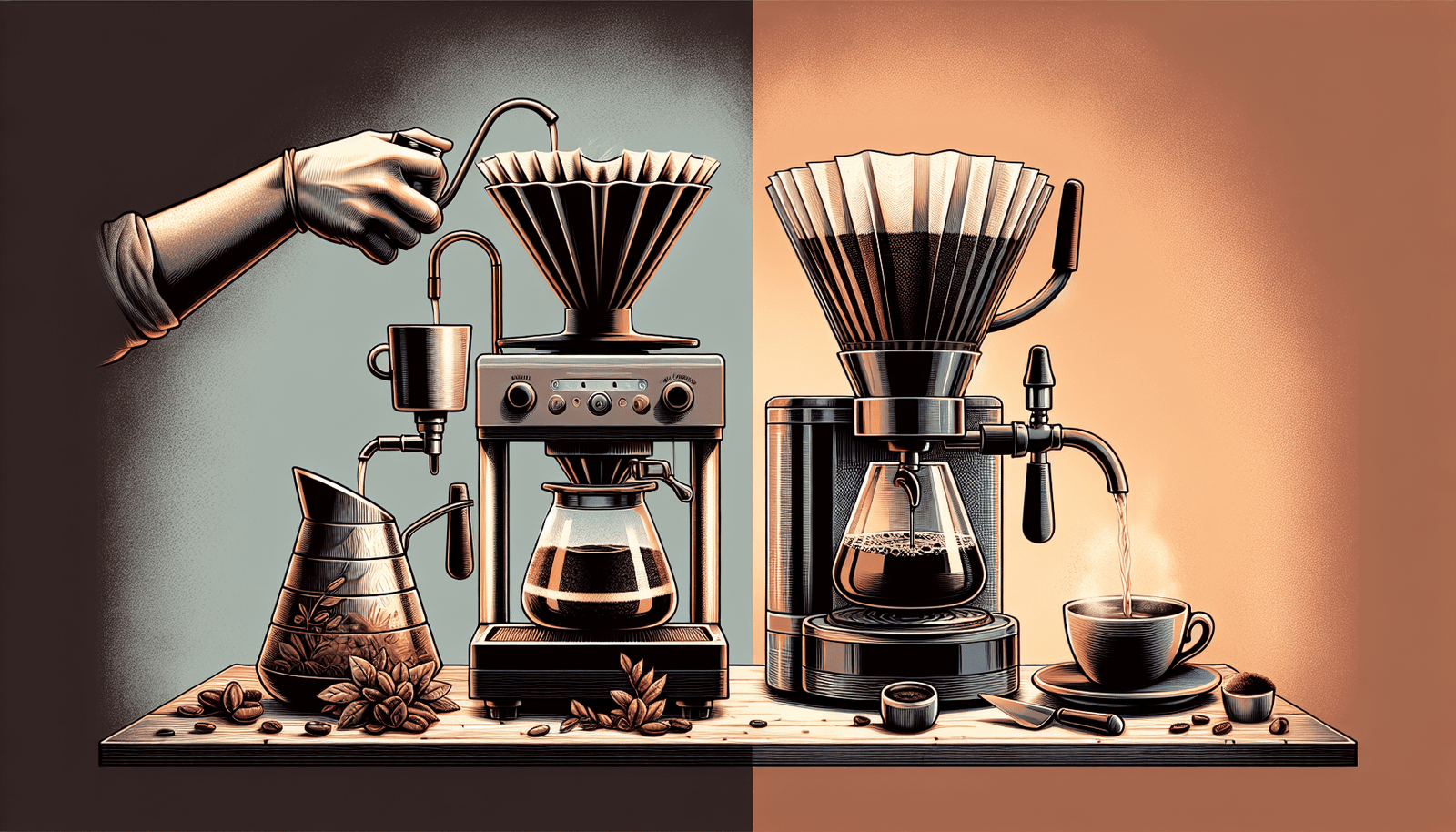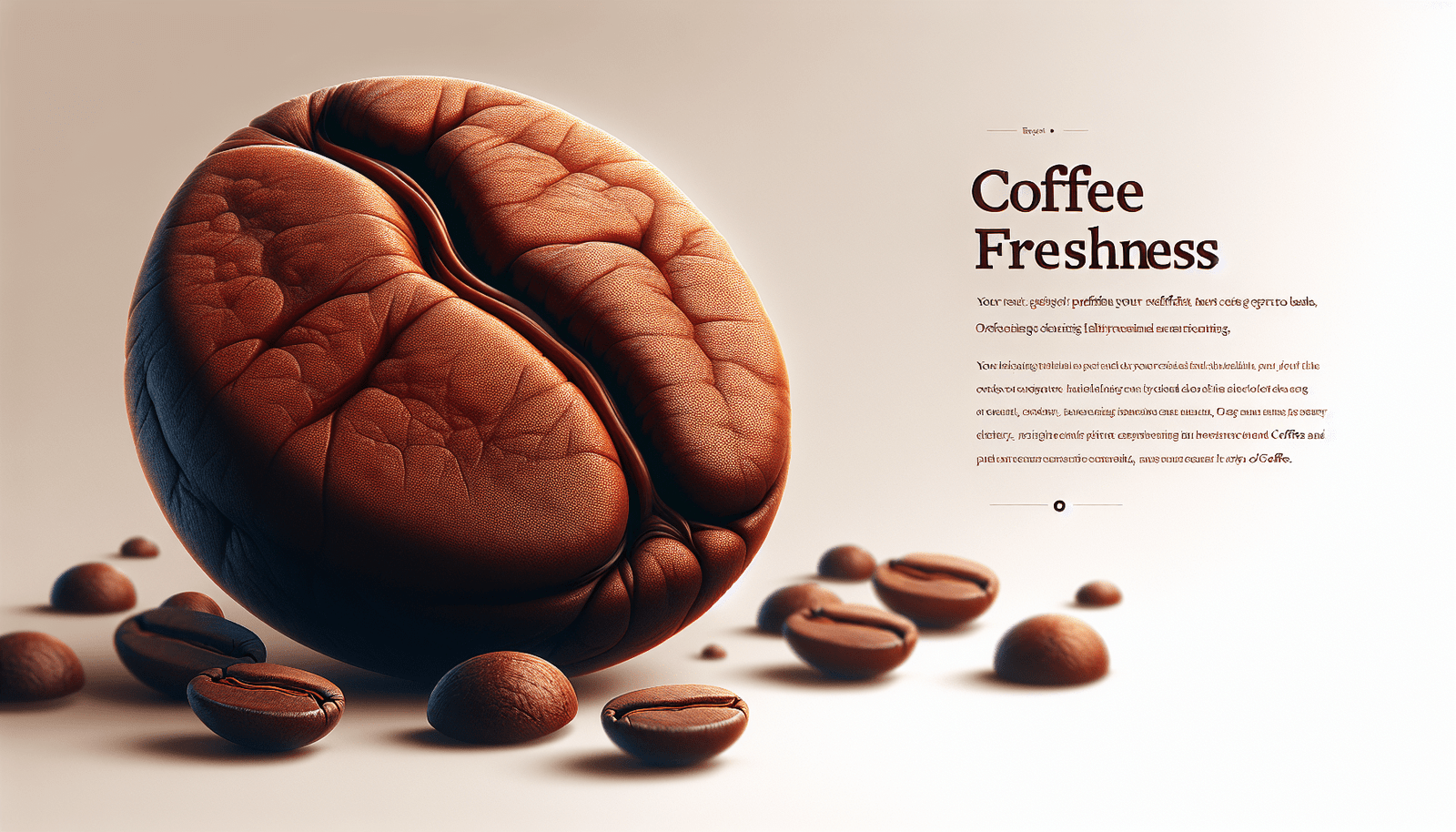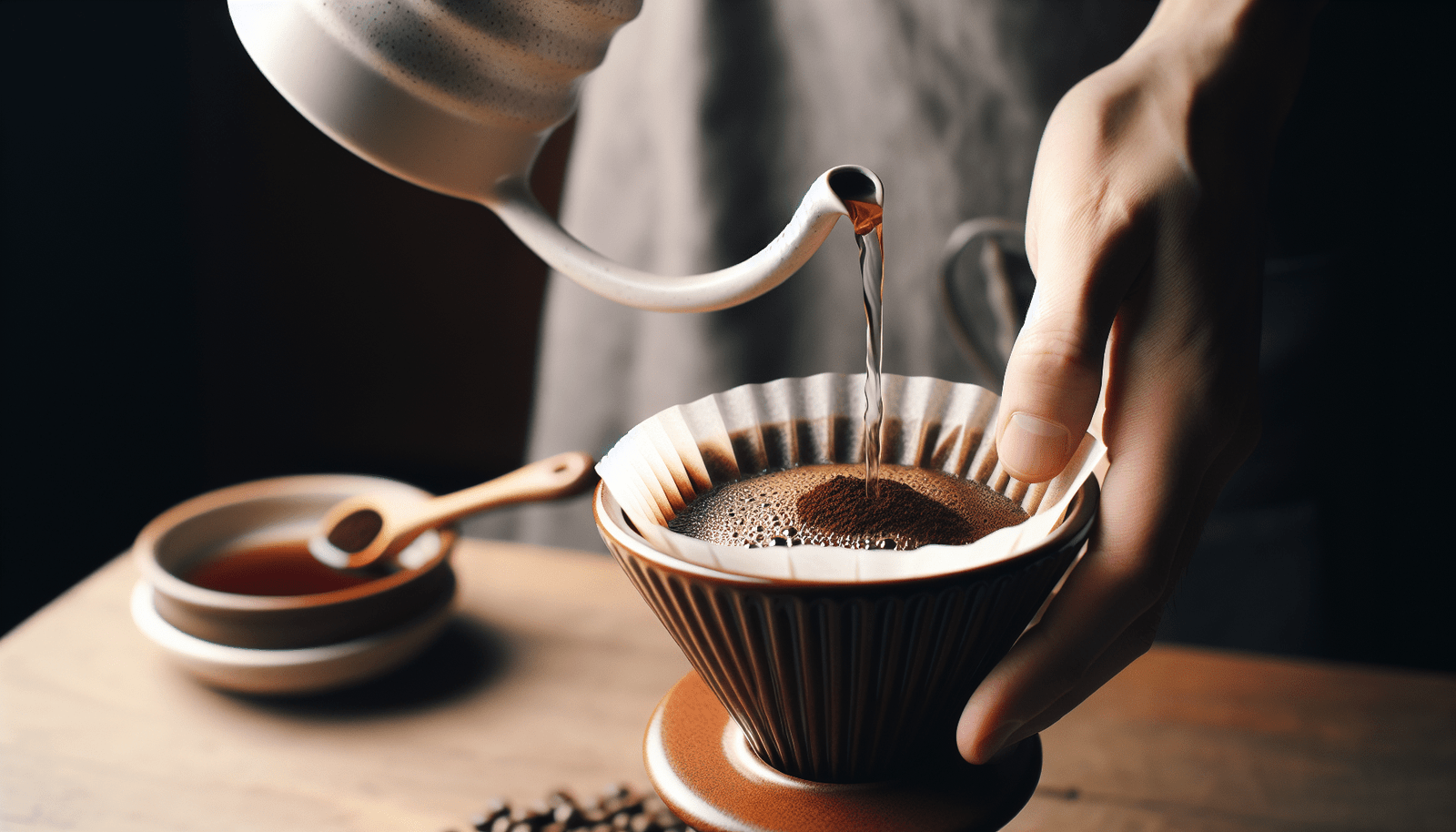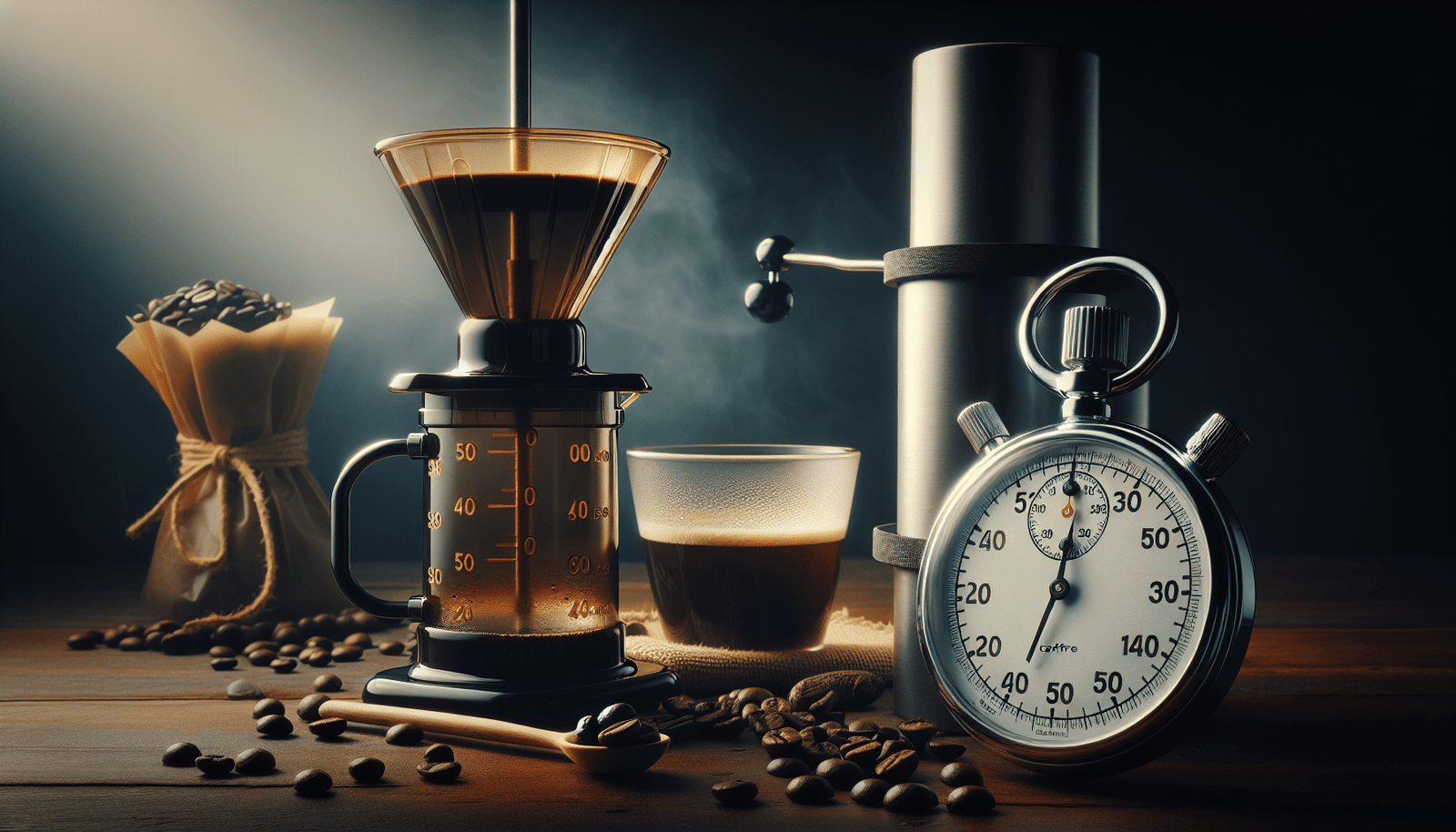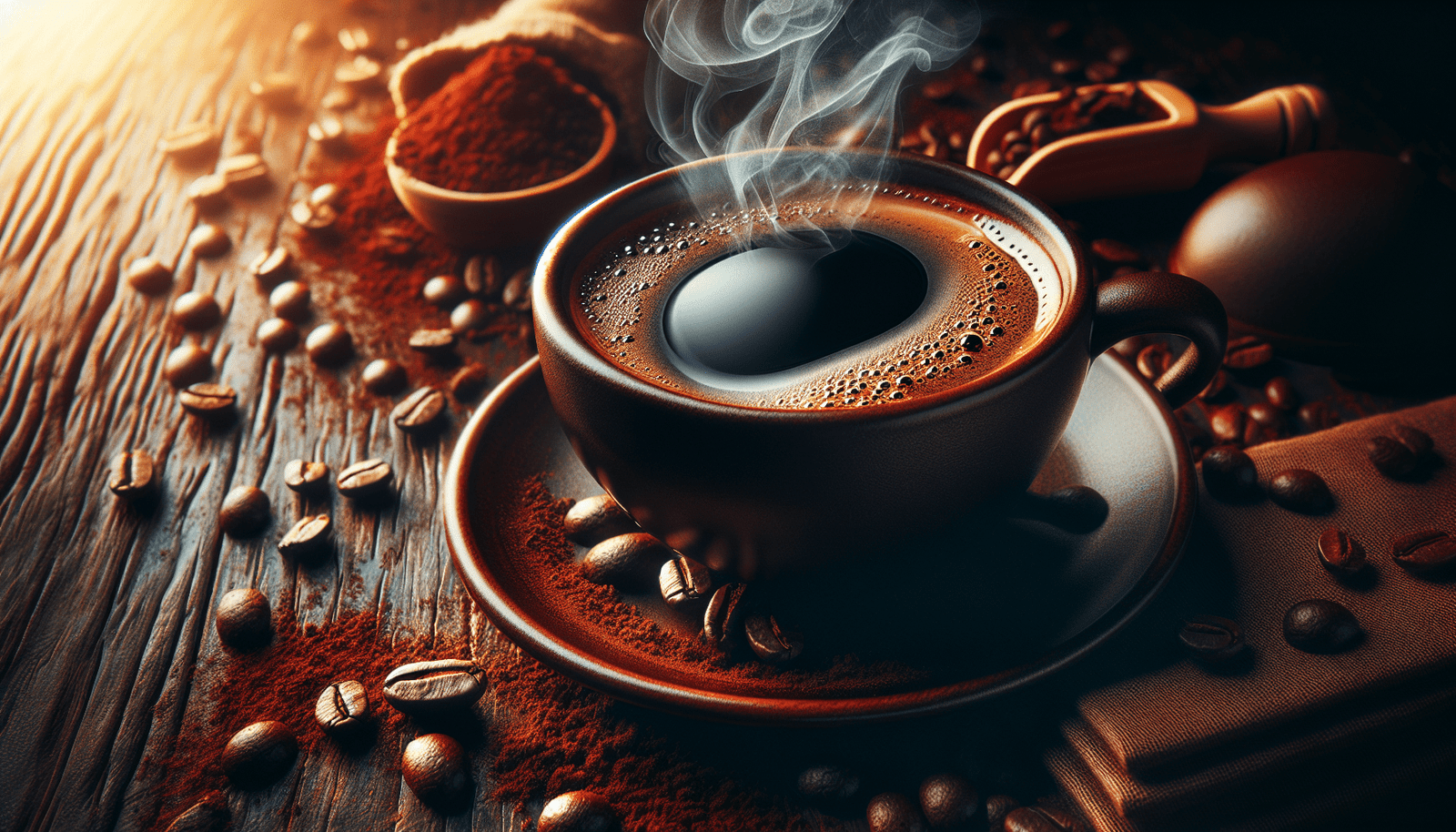Have you ever wondered about the age-old battle between pour over coffee and drip brewing? These two methods of coffee preparation have pitted coffee lovers against each other for years, each claiming to be the superior way to make a perfect cup of joe. While pour over coffee offers a hands-on, artisanal approach that allows for more control over the brewing process, drip brewing provides convenience and consistency. In this article, we will explore the differences between these two coffee brewing techniques and help you decide which one reigns supreme in your morning routine. Whether you’re a coffee connoisseur or just someone in search of a delicious cup of coffee, the debate between pour over and drip brewing is sure to pique your interest.
Introduction
Welcome to the ultimate showdown between two popular brewing methods: pour over coffee and drip brewing. If you’re a coffee aficionado, you know that the brewing method can make all the difference in the taste and aroma of your cup of joe. Both pour over coffee and drip brewing have their own unique advantages and drawbacks, so let’s dive in and explore the world of these brewing methods.
Definition of Pour Over Coffee
Explanation of pour over coffee brewing method
Pour over coffee is a manual brewing method that involves pouring hot water over coffee grounds in a filter. This process allows for greater control over the brewing variables, including water temperature, flow rate, and the extraction time. It requires a pour over coffee maker or a simple setup with a dripper, paper filter, and a carafe or cup.
Benefits of pour over coffee
One of the major benefits of pour over coffee is the control it gives you over the brewing process. You can adjust the water temperature, flow rate, and pour pattern according to your personal preference, resulting in a customized cup of coffee. Pour over brewing also allows for maximum extraction, bringing out the full flavors and nuances of the coffee beans. Additionally, the coffee brewed through this method tends to have a cleaner taste and a smoother mouthfeel.
Drawbacks of pour over coffee
While pour over coffee offers a lot of control and customization, it can also be time-consuming and labor-intensive. The pouring process requires some skill and practice to master, and it may not be the most convenient option for those on a tight schedule. Additionally, pour over coffee setups can be more expensive compared to other brewing methods, especially if you invest in high-quality equipment.
Definition of Drip Brewing
Explanation of drip brewing method
Drip brewing, on the other hand, is an automated brewing method commonly found in coffee makers. It involves the continuous dripping of hot water through a filter containing coffee grounds. Drip brewing machines control the water temperature, flow rate, and extraction time automatically, making it a simple and hassle-free brewing method.
Benefits of drip brewing
Drip brewing is known for its convenience and ease of use. With just a push of a button, you can have a fresh cup of coffee ready in minutes. This makes it a popular choice for busy individuals or households with multiple coffee drinkers. Drip brewing machines also often come with programmable features, allowing you to set a timer and wake up to the aroma of freshly brewed coffee.
Drawbacks of drip brewing
While drip brewing may offer convenience, it sacrifices some of the control and customization that pour over coffee provides. Since the brewing variables are automated, you have limited control over factors like water temperature and flow rate. This can result in a less precise extraction and potentially duller flavors. Additionally, the drip brewing process may not fully unlock the subtle nuances and complexities found in specialty coffee beans.
Comparison of Pour Over Coffee and Drip Brewing
Difference in brewing process
The main distinction between pour over coffee and drip brewing lies in the brewing process. Pour over coffee is a manual method where you pour water over the grounds, controlling the variables as you go. Drip brewing, on the other hand, involves an automated machine that gradually drips water through the grounds. The manual nature of pour over brewing allows for greater customization and precision.
Flavor profile and aroma
Pour over coffee is often known for its clean, crisp flavors and a more pronounced acidity compared to drip brewed coffee. The slow and controlled extraction of pour over brewing allows for the full expression of the coffee’s natural flavors, resulting in a well-balanced and vibrant cup. Drip brewed coffee, while still enjoyable, may sometimes have a mellower flavor due to the automated process.
In terms of aroma, pour over coffee tends to have a more fragrant and aromatic profile. The slow pour and extended contact time between water and coffee grounds result in a richer aroma that fills the room. Drip brewing, on the other hand, may produce less intense aromas, though it still offers a pleasing fragrance.
Control over brewing variables
Pour over coffee grants you the freedom to fine-tune various brewing variables. You can adjust the water temperature, pour speed, and timing to create a cup that perfectly suits your taste preferences. Drip brewing, while automated, offers less control in these areas. The machine presets the water temperature and flow rate, limiting your ability to customize the brewing process.
Brewing time and convenience
When it comes to brewing time, pour over coffee can be a longer process compared to drip brewing. Pouring the water gradually over the grounds requires time and patience. On the other hand, drip brewing machines can have your coffee ready within a few minutes, allowing you to multi-task or prepare for the day ahead.
In terms of convenience, drip brewing undoubtedly takes the lead. With a programmable machine, you can set it up the night before and wake up to a freshly brewed pot of coffee. Pour over coffee, while rewarding, demands more attention and hands-on involvement. It is more suited for leisurely mornings or when you want to savor the brewing experience.
Equipment and cost
To make pour over coffee, you will need a pour over coffee maker or a simple dripper, a paper filter, and a carafe or cup to catch the brewed coffee. While some high-end pour over setups can be expensive, there are also affordable options available. Drip brewing, however, typically requires a coffee maker with built-in brewing mechanisms. These machines often come at a higher price point than pour over setups, especially if you opt for advanced features.
Taste and Aroma
How taste differs between pour over coffee and drip brewing
The taste experience varies between pour over coffee and drip brewing. Pour over coffee, with its ability for precise control, allows you to extract the full range of flavors from the coffee beans. The result is often a cup with well-balanced acidity, subtle sweetness, and a clean, crisp finish. Drip brewed coffee, while still flavorful, may have a slightly mellower taste due to less control over the brewing process.
Aroma characteristics of pour over coffee
The slow pouring process of pour over coffee contributes to the enhanced aroma profile. As the water slowly saturates the coffee grounds, the fragrant oils are released, creating a more aromatic and inviting cup of coffee. The aroma of pour over coffee can be floral, fruity, or even nutty, depending on the specific characteristics of the beans.
Aroma characteristics of drip brewing
Drip brewing, although producing a satisfying cup of coffee, may have a more subdued aroma compared to pour over coffee. The automated process with predetermined water flow and temperature may not fully unlock the complexity of the coffee beans’ aromas. However, drip brewing can still generate a pleasant and inviting fragrance, often reminiscent of a classic cup of coffee.
Brewing Variables
Water temperature control in pour over coffee
In pour over coffee, controlling water temperature is key to achieving the desired flavor extraction. Different coffee beans and roast levels require specific temperature ranges for optimal extraction. By manually heating the water and adjusting the pour, you have the flexibility to attain the perfect temperature, ensuring a well-balanced and flavorful cup of coffee.
Water distribution in drip brewing
While drip brewing machines ensure a consistent water distribution through the coffee grounds, the control over this aspect is limited. The built-in mechanisms provide a steady flow of water, but they may not evenly saturate the grounds. This can result in a less uniform extraction, potentially affecting the overall flavor and strength of the coffee.
Brewing Time and Convenience
Time required for pour over coffee
Pour over coffee brewing takes time and patience. The process involves heating water, grinding coffee beans, wetting the filter, and slowly pouring water in a controlled manner. Depending on your brewing technique, you can expect the entire process to take anywhere from three to six minutes.
Time required for drip brewing
Drip brewing is a much quicker method, with most coffee makers able to brew a pot of coffee within five to ten minutes. You simply add water, coffee grounds, and press a button to initiate the brewing process. This makes drip brewing ideal for busy mornings or when you’re in a rush.
Ease of use and convenience
If convenience is a priority for you, drip brewing takes the lead. With automated machines, drip brewing requires minimal effort and allows you to multitask while the coffee brews. Pour over coffee, on the other hand, demands more attention and precision. It is a hands-on brewing method that requires you to be fully engaged throughout the process.
Equipment and Cost
List of pour over coffee equipment
To make pour over coffee, you will need:
- Pour over coffee maker or dripper
- Paper filters
- Kettle for heating water
- Coffee grinder (optional)
- Carafe or cup to catch the brewed coffee
List of drip brewing equipment
For drip brewing, you will need:
- Drip brewing machine or coffee maker
- Filters specific to your machine
- Coffee grinder (optional)
- Carafe or cup to catch the brewed coffee
Comparison of equipment costs
Pour over coffee equipment can vary in cost, ranging from affordable basic setups to high-end options with additional features. Drip brewing machines, as automated appliances, often come at a higher price point due to their unique mechanisms and programmable functions. However, it’s important to consider the long-term savings on coffee grounds, as drip brewing typically requires less coffee per brew compared to pour over coffee.
Preference and Personal Choice
Factors influencing preference
When it comes to choosing between pour over coffee and drip brewing, several factors can influence your preference. Some of these factors include:
- Time availability: Pour over coffee may be more suited for those with a leisurely morning routine, while drip brewing can accommodate busy schedules.
- Taste preference: If you enjoy a strong, complex cup of coffee with complete control over the brewing variables, pour over coffee may be your preference. Drip brewing, on the other hand, is suitable if you prefer a more convenient and consistent cup.
- Cost considerations: Assessing your budget and the long-term cost of coffee grounds can also impact your decision. Pour over setups may have a higher initial cost, but drip brewing machines can consume more coffee with each brew.
Deciding based on individual taste and lifestyle
Ultimately, the choice between pour over coffee and drip brewing boils down to your personal taste preferences and lifestyle. If you value the ability to customize every aspect of your coffee and enjoy the brewing process as much as the end result, pour over coffee might be the perfect fit. However, if convenience, speed, and a hands-off approach are more important to you, drip brewing can provide a consistently satisfying cup of coffee without much effort.
Conclusion
In the battle between pour over coffee and drip brewing, both methods have something unique to offer. Pour over coffee brings control and customization to your brewing process, allowing you to extract the full flavors and aromas of your coffee beans. On the other hand, drip brewing provides convenience and ease of use, making it ideal for busy individuals or households with multiple coffee drinkers.
Ultimately, the choice between pour over coffee and drip brewing depends on your personal taste preferences, lifestyle, and the level of involvement you desire in your coffee brewing experience. Whichever method you choose, one thing is certain – a delicious cup of coffee awaits you. So grab your favorite beans, select your preferred brewing method, and savor the delightful moments that come with each sip of your perfectly brewed coffee.
